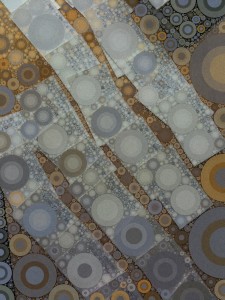Writers are so good at beating themselves up for all sorts of reasons, some valid, some not so much. Here’s some encouragement for dealing with writerly quilt.

Writers are so good at beating themselves up for all sorts of reasons, some valid, some not so much. Here’s some encouragement for dealing with writerly quilt.
Want access to a lively community of writers and readers, free writing classes, co-working sessions, special speakers, weekly writing games, random pictures and MORE for as little as $2? Check out Cat’s Patreon campaign.

"(On the writing F&SF workshop) Wanted to crow and say thanks: the first story I wrote after taking your class was my very first sale. Coincidence? nah….thanks so much."
 A metaphor that I was exposed to at Clarion West (now nearly a decade ago) still works beautifully for me, and it’s one I use when teaching: the idea of the writer’s toolbox.
A metaphor that I was exposed to at Clarion West (now nearly a decade ago) still works beautifully for me, and it’s one I use when teaching: the idea of the writer’s toolbox.
In my mind’s eye, it’s a big red metal tool chest, small enough to be carried around, large enough that you wouldn’t want to HAVE to carry it around all the time. Inside, drawers lift out to reveal neatly packed devices and tools, each in their own padded slot.
There’s a blade capable of lopping off awkward paragraphs, and sharper, tinier words designed for work at the sentence level, trimming beginnings till they catch a reader like a fish hook and pull them into the story. There’s a box of punctuation marks, with a special slot for the semicolons. There’s the intricate device of an unreliable narrator, calculated to wobble like a gyroscope yet still remain true to the story’s course. There’s a set of filters, each one a specific point of view, each letting you cast a section in a different light. And a layer of ornamental gadgetry: epigraphs and scraps of poetry. And a valuable gimlet, capable of drilling down to a character’s motivation: the question, “What does s/he WANT?”
Even this metaphor’s a device (and if you want to know more about metaphor, I can do no better than point you at Chuck Wendig’s excellent piece, in which he’s said everything I’d say and then quite a bit more).
I’ve been thinking about it in going over notes for the class on Literary Techniques in Genre Fiction, because my aim in that is two-fold: to give students not just a whole bunch of new tools, but some sense of when to use them and a chance to experiment with them. Because a device shouldn’t be separate from a story, but an integral part of it, something that adds more to it than just a chance to see the writer being clever.
To push the metaphor a little further, stories are like furniture, only without the useful part, like being able to sit on them. You want them to feel like a single piece, not a table with some drawers and ornamental hinges glued on it. In the class, I try to introduce new tools students may not have (consciously) worked with before, including defamiliarization, hyperbole, synthesia, and a lot of other fancy words. And I also try to expand a drawer they’ve already got partially filled: sources of creative inspiration.
Enjoy this writing advice and want more content like it? Check out the classes Cat gives via the Rambo Academy for Wayward Writers, which offers both on-demand and live online writing classes for fantasy and science fiction writers from Cat and other authors, including Ann Leckie, Seanan McGuire, Fran Wilde and other talents! All classes include three free slots.
Prefer to opt for weekly interaction, advice, opportunities to ask questions, and access to the Chez Rambo Discord community and critique group? Check out Cat’s Patreon. Or sample her writing here.
...

Many of us know the term “infodump,” where a whooooole bunch of information necessary for understanding the story gets thrown at the reader, sometimes in the form of dialogue, sometimes outright chunks of books, or some other form. We want to avoid these because they’re usually dry and a little boring, and because they put readers off.
But at the same time, there is information we -need- for readers to know. And sometimes we may not realize it. If we don’t give it, then events may seem unlikely or heavy-handed or even incomprehensible.
I’ve been reworking a novel for the final time, and one thing I’ve realized in doing it is that the progression of scenes in the last section is not clear. I needed to spend more time being clear that the characters were moving from one place to another so readers could understand where they ended up. And I’d been coy about it, to the point where the reader just wasn’t getting that information.
This is where getting someone else to read a piece is crucial. Because that progression is so clear in the writer’s head that we cannot perceive what’s missing for the reader. One of the most important questions you can ask a reader is “What questions did this leave you with?” or “What didn’t you understand?” Because it’s just as easy to be too subtle — perhaps even easier — than to be overt, since what feels very obvious to you may not be a fraction as apparent to your reader.
And holy cow, how is it that in this version, which I had sent out to my agent already, that I found this on one page: “(insert description later)”? ARGH.
...